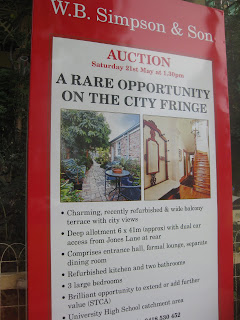Obviously most look great with heaps of watering which is fantastic for the moment but in times of drought having the most luscious plants isn't the main priority, keeping them alive is. But how do we find a compromise between what we want, what the plants want and whats best for the environment in terms of water saving? This question will become more pressing as climate change mucks around with our weather patterns and average rainfall.
This is where www2.smartgardenwatering.org.au comes into play as a very helpful tool. It is designed to calculate the amount of water your garden needs and how often it needs it, taking into account many environmental factors. The very first step, before you even register your garden, is immediately helpful. After entering your suburb (unfortunately suburbs of Melbourne, Vic only) it immediately tells you the average yearly rainfall for your area.
Following on from this you are prompted to choose the factors of your garden; size, plants (from a huge and easy to use list including pictures), watering method, mulch and environmental conditions. After this information has been gathered it will calculate the amount of water needed and how often to water. I only used a selection of plants as the site only caters for plants in soil. As I live in a terrace with a courtyard most of mine are in pots, though there is a climbing fig on one wall, a lavender bush, space for some spring annuals and a few succulents. Even with this abridged list I was surprised at how little water the site suggested my plants needed, 7 minutes a month and only in January. 7 minutes hose watering a year.
This is an excellent site that would be extremely helpful to those with a large and established garden, though it didn't quite suite my needs. It would be good if it had options for gardens with lots of plants in pots. I would have liked to have tried it with my Mums garden but as it is a relatively new site it only registers Melbourne suburbs, so I look forward to having a garden that I can use smartgardenwatering.org.au on.
Overall a really good site, very well made and easy to use. I highly recommend you have a look.



















